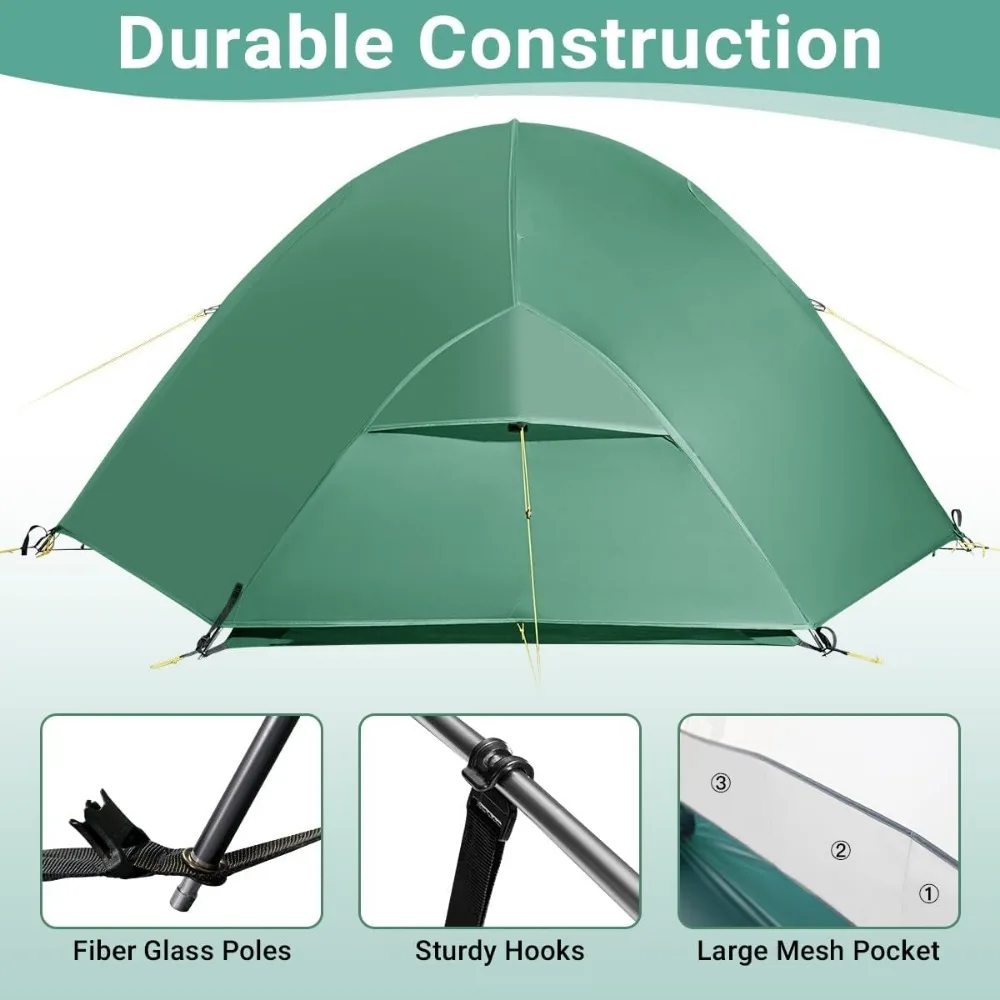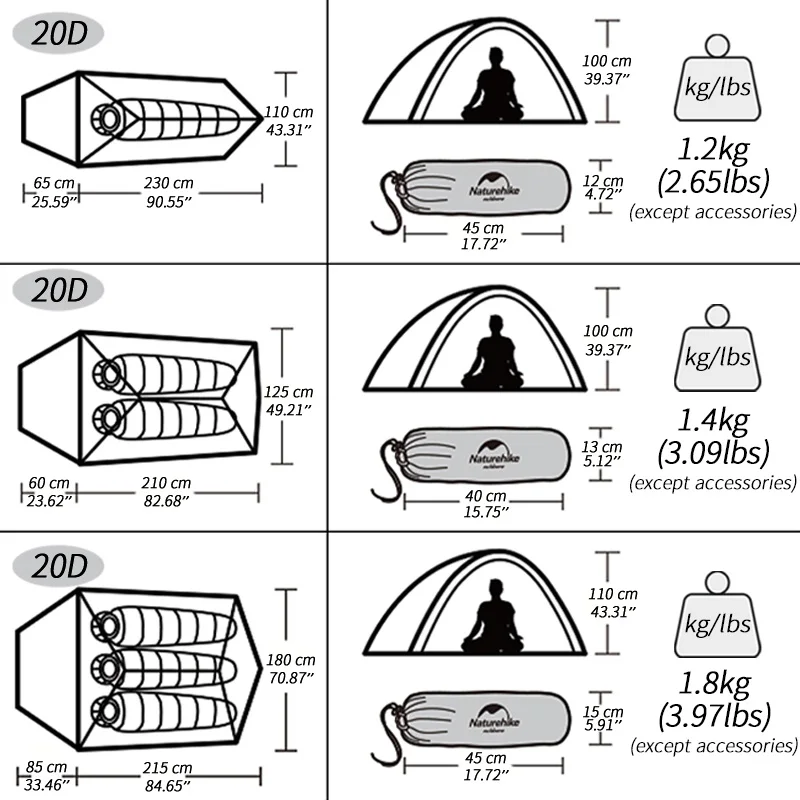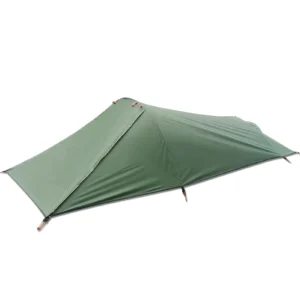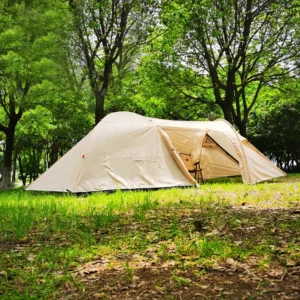Understanding the Importance of Proper Rain Gear for Backpacking
Heading into the backcountry when rain is in the forecast isn’t just about dealing with a little discomfort—it’s about safety. Without adequate rain protection, hikers face serious risks including:
- Hypothermia, which can occur even in mild temperatures when clothing becomes soaked
- Painful chafing and blisters from wet fabric rubbing against skin
- Decreased morale and impaired decision-making as comfort deteriorates
The stakes are particularly high when you consider that in wet conditions, your body can lose heat up to 25 times faster than in dry conditions. This makes proper rain gear essential for backpackers who may be miles from shelter when weather turns.
Good rain gear represents the perfect balance between keeping water out while letting your body breathe. This delicate balance between waterproofness and breathability is critical—too waterproof without enough breathability, and you’ll end up soaked from the inside with your own sweat. Too breathable without enough water resistance, and rain will penetrate.
When selecting gear, understanding waterproof ratings in rain gear helps you make informed choices that match your adventure needs. Remember that quality rain protection isn’t just about comfort—it’s an investment in your safety and enjoyment of the outdoors.
The Essential Layering System for Wet Weather Hiking
The secret to staying comfortable in wet conditions isn’t a single magical piece of gear—it’s a carefully designed system of layers working together. Think of your clothing as an integrated system rather than individual pieces.
The classic three-layer approach provides the foundation for effective rain protection:
- Base layer: Sits against your skin to manage moisture
- Mid layer: Provides insulation even when damp
- Outer layer: Shields against wind and rain while allowing some breathability
This system allows you to adapt to changing conditions by adding or removing layers as needed. One moment you might be hiking uphill in light drizzle generating heat, the next you could be stopped at an exposed viewpoint facing driving rain and wind.
The key challenge in wet weather isn’t just keeping rain out—it’s managing moisture from both outside (precipitation) and inside (sweat). Various materials used in waterproof hiking gear address this dual challenge through different technologies and design approaches.
Base Layer: Managing Moisture Next to Your Skin
Your base layer serves as your first defense against moisture—not from rain, but from your own body. When backpacking, you’ll generate sweat even in cool, rainy conditions, and this moisture needs to move away from your skin quickly.
The two primary materials for effective base layers are:
- Merino wool: Naturally wicks moisture, retains warmth when damp, resists odors, and feels soft against skin
- Synthetic fabrics (polyester, nylon blends): Dry faster than wool, are typically more durable, and cost less
What makes these materials work is their ability to pull moisture from your skin to the outer surface of the fabric where it can evaporate or transfer to the next layer. This is why cotton performs so poorly—it absorbs up to 27 times its weight in water compared to just 7% for many synthetics.
Key features to look for in base layers include:
– Flat seams to prevent chafing
– Snug but not restrictive fit
– Appropriate weight for conditions (lightweight for warmer rain, midweight for colder)
After a day on wet trails, returning to a waterproof backpacking tent gives you a dry haven to change into fresh base layers.
Mid Layer: Insulation That Works When Wet
The mid layer’s job is to trap warm air while continuing the moisture transfer process from your base layer. Unlike fair-weather hiking, your insulation must perform even when damp.
Effective mid layer options include:
- Polyester fleece: Budget-friendly, quick-drying, and maintains most insulating properties when damp
- Synthetic insulated jackets: Offers excellent warmth-to-weight ratio and continues insulating when wet
- Treated hydrophobic down: More packable than synthetic insulation but more expensive and still less effective when soaked
For rainy conditions between 45-65°F (7-18°C), a lightweight fleece often provides sufficient insulation. For temperatures below 45°F (7°C), consider a more substantial fleece or synthetic insulated jacket.
The key is adjustability—your mid layer should be easy to remove when you’re working hard and quickly deployable when you stop and begin to cool down.
Outer Layer: Your Waterproof Shield
Your outer shell is your primary defense against precipitation and wind. This critical layer must balance keeping water out while allowing sweat vapor to escape.
When selecting a rain jacket and pants, understand these key concepts:
- Waterproofness: Measured in millimeters of water pressure the fabric can withstand (10,000mm is good, 20,000mm is excellent for heavy conditions)
- Breathability: Rated by how many grams of water vapor can pass through a square meter in 24 hours (10,000g/m²/24hr is minimal, 20,000+ is high-performance)
Modern waterproof-breathable fabrics use membranes or coatings to achieve this balance:
- Membrane technologies (Gore-Tex, eVent): Feature microscopic pores that block water droplets while allowing water vapor to escape
- Coated fabrics: Less expensive but typically less durable and breathable than membrane options
The benefits of proper waterproofing become apparent within minutes of a downpour starting, making this layer worth thoughtful consideration and investment.
Essential Rain Gear: Head-to-Toe Protection
Staying dry in wet conditions requires a comprehensive approach—rain finds any weakness in your gear system. While many hikers focus exclusively on a good jacket, true protection requires addressing every exposure point from your head down to your feet.
Water typically enters your gear system through:
– Hood and neck openings
– Wrist cuffs
– Waistband areas
– Footwear
– Pack-to-back interfaces
A complete protection strategy integrates essential waterproof gear for backpackers into a unified system where each piece complements the others. The level of protection needed varies based on:
- Trip duration (weekend vs. multi-week)
- Expected rainfall intensity and duration
- Temperature ranges
- Activity level (casual hiking vs. high-exertion activities)

Rain Jacket: The Cornerstone of Rain Protection
Your rain jacket serves as the foundation of your wet weather protection system. Beyond basic waterproofing, these key features make the difference between staying comfortably dry or miserably damp:
- Hood design: Look for a structured brim, volume adjustment, and the ability to turn with your head
- Ventilation: Pit zips can release up to 30% more body heat during exertion
- Seam taping: Fully taped seams prevent water entry at stitch lines
- Adjustable cuffs: Prevent water running down arms during overhead movements
- Durable Water Repellent (DWR): Causes water to bead up and roll off rather than saturate the outer fabric
Rain jackets typically come in three construction types:
| Construction | Weight | Durability | Typical Price |
|---|---|---|---|
| 2-Layer | Heaviest | Good | $80-150 |
| 2.5-Layer | Lightest | Moderate | $150-250 |
| 3-Layer | Moderate | Excellent | $250-600 |
For extended backpacking trips in sustained rain, a 3-layer jacket typically provides the best long-term performance and durability. For occasional rain or emergency use, a 2.5-layer jacket offers excellent packability. When weather looks particularly challenging, consider the protection of 4-season winter 2-person tents for your backcountry shelter.
Rain Pants: Critical Lower Body Protection
While hikers sometimes try to economize by skipping rain pants, they’re essential for complete protection in sustained rainfall. When water runs down your jacket and saturates your hiking pants, you lose critical heat and comfort.
Key features to consider in rain pants:
– Side zips: Full-length or ankle zips allow putting on pants without removing boots
– Reinforced areas: Extra material at seat and knees extends durability
– Articulated knees: Improve mobility on steep terrain
– Adjustable waist: Accommodates varying base layers underneath
Ultralight rain pants (6-8 oz/170-227g) are perfect for emergency use and occasional showers, while more robust options (10-15 oz/283-425g) provide better durability for extended trips in challenging conditions.
Unlike rain jackets that you might wear proactively, rain pants are typically deployed when rainfall becomes steady or when temperatures drop. Learning when to stop and put them on before your hiking pants become saturated is a valuable backpacking skill.
Footwear Solutions for Wet Conditions
Two philosophical approaches exist for wet-weather footwear:
- Waterproof approach: Using waterproof boots or shoes with membranes to keep water out
- Fast-drying approach: Using breathable trail runners that allow water in but drain and dry quickly
Both approaches have merit depending on conditions:
Waterproof boots excel in:
– Cold, wet conditions where keeping feet dry equals keeping feet warm
– Shallow water crossings and wet vegetation
– Snow-mixed conditions
Quick-drying trail runners excel in:
– Warm, wet conditions where breathability is crucial
– Deep water crossings (waterproof boots become buckets once water enters over the top)
– High-mileage days where weight impacts fatigue
Consider that waterproof boots typically take 24+ hours to dry when soaked internally, while mesh trail runners might dry in 4-6 hours. This makes trail runners potentially better for multi-day trips with unavoidable deep water.
Gaiters provide additional protection by creating a barrier between your footwear and lower legs. Available in ankle, mid, and full heights, they prevent water, debris, and mud from entering your footwear from above.
For comprehensive protection, bring additional dry shelter options like waterproof camping tents for reliable protection at camp.
Essential Accessories: Headwear, Handwear, and More
Complete rain protection requires attention to areas beyond the major garments:
Headwear options:
– Waterproof hat with brim (prevents water running down neck)
– Cap worn under hood (keeps hood from sliding back)
– Waterproof ball cap with hood (best visibility and protection combination)
Handwear considerations:
– Waterproof gloves or mittens for cold, wet conditions
– Glove liners with waterproof shells for adaptable protection
– Fingerless options for dexterity with some protection
Additional protection items:
– Waterproof stuff sacks for sensitive gear
– Pack cover or pack liner (trash compactor bags work well)
– Neck gaiter to prevent water entry at collar
Proper maintenance of waterproof gear extends its effectiveness and lifespan, particularly for accessories that often receive less attention than primary garments.
Material Science: Understanding Fabrics for Wet Conditions
The technology behind waterproof-breathable fabrics has evolved dramatically over the past decades. Understanding how these materials work helps you make better purchasing decisions and properly care for your gear.
Modern waterproof-breathable fabrics work through one of two primary mechanisms:
- Microporous membranes: Contain billions of pores too small for water droplets but large enough for water vapor molecules
- Monolithic membranes: Use chemical properties rather than physical holes to move moisture through solid material
| Material Type | Waterproofness | Breathability | Durability | Typical Use |
|---|---|---|---|---|
| ePTFE Membrane (Gore-Tex) | Excellent | Very Good | High | Extended expeditions |
| PU Membrane | Very Good | Good | Medium | General backpacking |
| Coated Nylon | Good | Moderate | Low-Medium | Emergency use |
| Softshell | Low-Moderate | Excellent | High | Active use in light rain |
The durability of any waterproof material depends largely on the face fabric that protects the membrane. Denier ratings (a measure of thread thickness) typically range from ultralight 10D nylon to robust 70D+ materials for alpine conditions.
For extreme weather protection beyond your clothing system, windproof winter tents provide an essential backup shelter system.

The “No Cotton” Rule: Why It Matters
The adage “cotton kills” sounds dramatic, but it’s based on sound physical properties. Cotton:
- Absorbs moisture rather than wicks it
- Loses all insulating properties when wet
- Dries extremely slowly
- Becomes heavy and abrasive when saturated
This creates a dangerous combination in wet conditions, as wet cotton pulls heat from your body continuously. A wet cotton t-shirt can extract body heat at rates 25 times faster than when dry.
Common cotton items to eliminate from your backpacking kit include:
– Jeans or cotton pants
– Cotton t-shirts and underwear
– Cotton socks
– Cotton hoodies or sweatshirts
Even in seemingly minor amounts, cotton can create major problems in wet conditions, especially as temperatures drop.
Smart Packing Strategies for Rainy Backpacking
How you pack for wet conditions is nearly as important as what you pack. Consider these approaches:
- Pack critical items redundantly: Extra socks and base layers sealed in waterproof bags
- Line your pack: Use a trash compactor bag as an internal waterproof liner
- Create accessibility tiers: Keep rain gear in quick-access pockets or top compartments
- Separate wet and dry: Designate external pockets for wet items
Organize your gear into waterproof categories:
– Must stay dry (sleeping bag, insulation layers, electronics)
– Should stay dry (most clothing, food)
– Can get wet (shelter exterior, cooking equipment)
Quick-access rain gear allows you to respond rapidly to changing conditions without exposing the interior of your pack. This is particularly important with lightweight backpacking tents that need to be kept dry for comfortable sleeping.
Advanced Tips for Managing Rainy Conditions
Experienced backpackers develop proactive strategies for extended wet weather trips:
- Preemptive layering: Put rain gear on before rain starts when you see dark clouds
- Strategic breaks: Use natural shelters for layer changes and snack breaks
- Camp selection mastery: Choose sites on slight rises, never in depressions
- Sleep system protection: Use vapor barriers to prevent sleeping bag moisture accumulation
For drying wet gear on multi-day trips:
– Place damp socks inside your sleeping bag (not wet)
– Use body heat strategically for essential items
– Carry a small camp towel for drying gear
– Take advantage of even brief sunny periods
Lightweight Backpacking Tent, Ultralight Backpacking Tent, Ultralight Bivy Tent
Ultralight Single Person Camping Tent with Aluminum Poles for 3-Season Backpacking Waterproof DesignPrice range: $94.88 through $326.82 Select options This product has multiple variants. The options may be chosen on the product pageLightweight Backpacking Tent, Ultralight Backpacking Tent, Waterproof Backpacking Tent
$391.05 Select options This product has multiple variants. The options may be chosen on the product pageHeavy Duty 4 Season Tent, Mountaineering Tent, Winter Camping Tent
$870.40 Select options This product has multiple variants. The options may be chosen on the product pageCompact Backpacking Tent, Lightweight Backpacking Tent, Waterproof Camping Tent
$335.52 Select options This product has multiple variants. The options may be chosen on the product pageUltralight Backpacking Tent, Ultralight Dome Tent, Winter Camping Tent
Price range: $369.63 through $370.07 Select options This product has multiple variants. The options may be chosen on the product pageCamping Tent with Vestibule, Waterproof Camping Tent
Price range: $407.89 through $479.48 Select options This product has multiple variants. The options may be chosen on the product page
Properly outfitted backpackers can remain comfortable even after multiple days of rain by maintaining at least one set of protected dry clothes and implementing these moisture management techniques.

For the best protection during extended rainy trips, consider top waterproof shelter picks from Explore Elements that have proven performance in challenging conditions.
Preventing Chafing and Blisters in Wet Conditions
Wet conditions dramatically increase the risk of skin problems due to constant moisture and friction. Prevent these issues with:
- Anti-chafe products: Apply lubricants like Body Glide to potential hot spots
- Strategic taping: Pre-tape known problem areas with Leukotape or KT tape
- Moisture-wicking underwear: Prevents persistent dampness in sensitive areas
- Sock systems: Consider liner socks under hiking socks for reduced friction
- Frequent sock changes: Swap to dry socks at lunch breaks and creek crossings
Pay special attention to:
– Inner thighs
– Underarms
– Feet (especially between toes)
– Hipbelt and shoulder strap contact points
Taking preventive measures before problems develop is far more effective than treating painful skin issues on the trail.
Budget Considerations: Where to Invest and Where to Save
Quality rain gear represents a significant investment, but not every piece needs to be top-tier. Prioritize spending on:
- Rain jacket: The cornerstone of your protection system
- Footwear: Critical for comfort and preventing injuries
- Pack waterproofing: Protecting everything else you carry
Areas where budget options often perform adequately:
– Rain pants (for occasional use)
– Base layers (synthetic options perform well at lower price points)
– Accessory items (gloves, stuff sacks)
Finding quality gear without breaking your budget:
– Shop end-of-season sales
– Consider last year’s models
– Look for gear with lifetime warranties that justify higher initial cost
If budget constraints exist, consider more affordable lightweight pop-up tent options that still provide good wet weather performance.
Safety Considerations for Hiking in the Rain
Rain introduces specific hazards beyond just discomfort:
Hypothermia awareness:
– Watch for the “umbles”: mumbling, stumbling, fumbling, grumbling
– Early intervention is critical—stop, add layers, get calories, seek shelter
– Remember hypothermia can occur even at 50°F (10°C) when wet
Terrain hazards:
– Slippery roots and rocks require slower pace and careful foot placement
– Stream crossings may become dangerous after heavy rain
– Steep terrain becomes more treacherous when wet
Navigation challenges:
– Reduced visibility makes landmark identification difficult
– Electronics may fail in persistent moisture
– Always carry waterproof map and compass as backup
For comprehensive protection in challenging conditions, our ultimate guide to weatherproof gear for backpacking provides additional safety insights.
When to Reconsider: Knowing Your Limits
Sometimes the wisest decision is changing your plans. Consider alternatives when facing:
- Flash flood warnings in canyon terrain
- Thunderstorms in exposed areas
- Water crossings with swift currents above knee height
- Early signs of hypothermia or exhaustion among group members
- Limited visibility in terrain requiring careful navigation
Developing good judgment about when to press on versus when to turn back, seek shelter, or change routes is an essential backcountry skill. This judgment improves with experience but should always err on the side of caution.
Having backup plans for each day of your trip provides options when conditions deteriorate beyond safe limits.
The Mindset for Embracing Rainy Backpacking
With proper gear and techniques, rainy backpacking offers unique rewards:
- Misty landscapes create photographic opportunities unavailable in clear weather
- Wildlife activity often increases during and after rain
- Popular trails become less crowded
- The sound of rainfall on a tent fly creates a soothing backdrop for sleep
Experienced backpackers often find that their most memorable trips involved challenging weather. The sense of accomplishment from successfully navigating difficult conditions builds confidence and deepens your connection with nature.
The right mindset—paired with appropriate gear from Explore Elements—transforms potentially miserable conditions into rewarding adventures. By preparing thoroughly and approaching rain as part of the experience rather than an obstacle to it, you open yourself to the full spectrum of what the backcountry offers.







